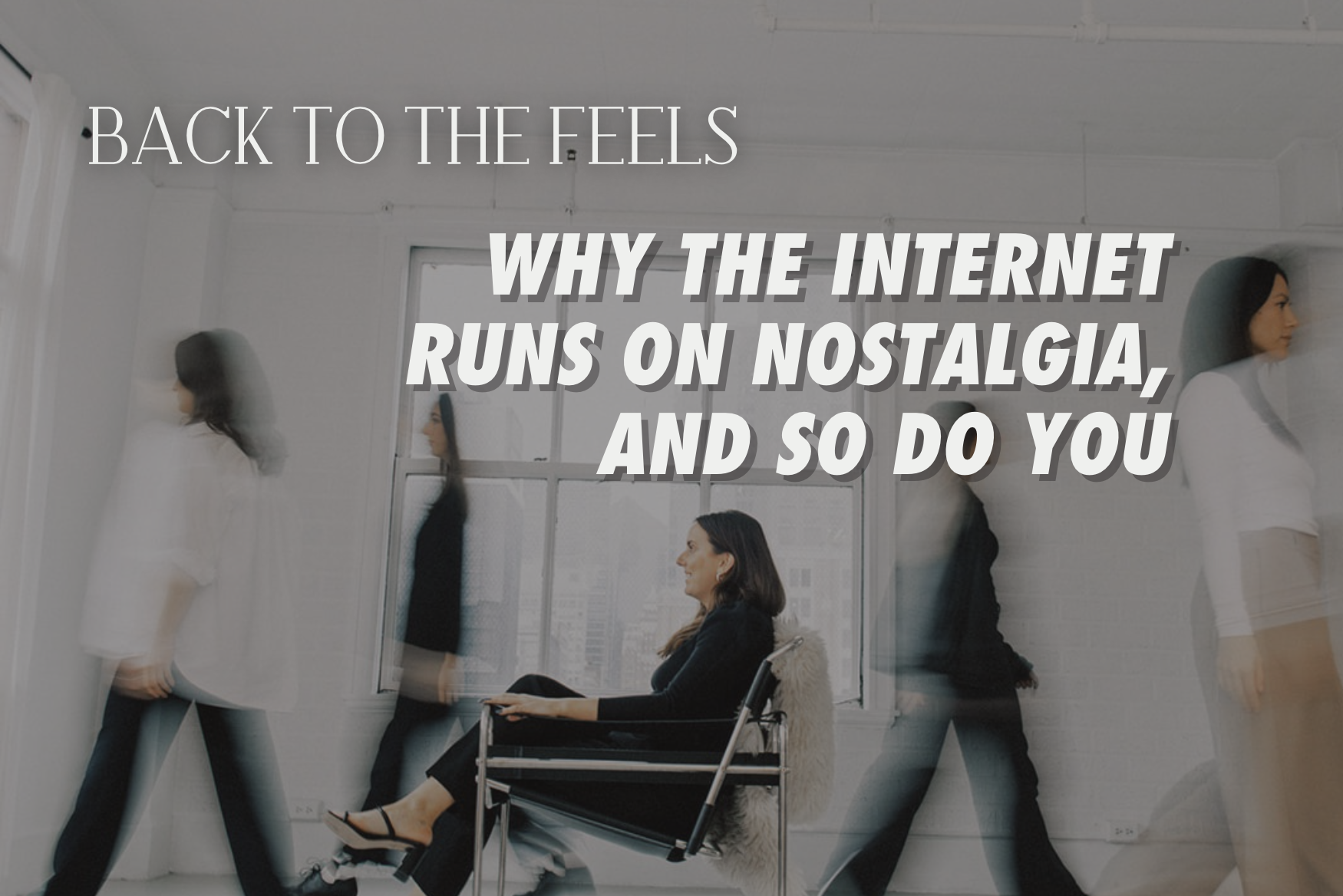THIS IS WHY THE INTERNET IS OBSESSED WITH NOSTALGIA
AS THE INTERNET RACES FORWARD, ONE THING KEEPS PULLING US BACK: NOSTALGIA.
In a world that often feels like a non-stop race, one trend is gaining unstoppable momentum: looking back.
From Y2K fashion on TikTok to TV show reunions (did you see Demi singing Camp Rock songs with the Jonas Brothers at their concert!?), and the comeback of childhood brands, nostalgia isn’t just a feeling, it’s one of the most powerful digital marketing strategies of the moment.
We’re not just scrolling for content, we’re scrolling for comfort. And the brands that get it? They’re winning.Why Nostalgia Works
Nostalgia is the currency of trust.
For consumers, especially women ages 25–50, nostalgic content offers a comforting escape from the complexities of daily life. For brands, evoking those memories isn’t about being trendy, it’s about building a deep emotional connection that lasts.
💡 The science backs it up: Studies show that 80% of purchasing decisions are emotional. Nostalgia taps into memory and mood, creating instant familiarity, sparking trust, and boosting shareability.Nostalgia in the Digital Age
This isn’t your 2012 sepia-filter throwback. Today’s nostalgia is interactive, aesthetic, and designed for engagement. Here's how it works today:
VIRAL CONTENT
When a post reminds us of a happy moment, we share it. It feels like sharing a piece of our own story.AUTHENTIC STORYTELLING
Anecdotes, retro visuals, or old-school soundtracks make brands feel more human. That turns casual followers into loyal fans.EASY UGC
A simple “What was your favorite childhood snack?” can generate hundreds of comments. Nostalgia invites people to co-create the story, and algorithms love it.Who’s Fueling the Nostalgia Wave
Nostalgia online isn’t owned by one generation, it’s a cross-generational vibe that everyone is remixing in their own way.
Gen Z is borrowing the past to create the future: flip phones, Y2K fashion, and grainy edits turn into TikTok aesthetics. Millennials are reliving their peak teen years: Avril on repeat, butterfly clips, and “did you add me on MSN?” vibes. Older Millennials + early Gen X lean into comfort culture: 90s TV rewatches, beauty throwbacks, and the snacks that defined their childhoods.
Different eras, same energy: turning memories into content, conversations, and cultural moments that spread fast.How Brands Can Use Nostalgia (Without Getting Stuck in the Past)
MAKE IT INTERACTIVE
Polls, quizzes, and TikTok challenges get people to play along, and share.BLEND OLD + NEW
Throwback aesthetics + modern formats (Reels, Shorts, carousels) = instant engagement.
Ex: A classic audio with a modern product.TAP INTO MICRO-MOMENTS
Nostalgia works in niches: a 2000s playlist drop, a Friends meme, or a comfort-food recipe can spark massive interaction.*Pro Tip
Nostalgia is powerful, but it has to feel authentic. Go beyond the throwback, give it a modern twist that fits your brand identity. And amplify it with creator partnerships. Their personal stories + retro vibes = content that feels real and performs well.THE BOTTOM LINE
Nostalgia isn’t just a trend. It’s the formula for deeper engagement. It works because it doesn’t sell a product, it sells a feeling. A memory. A moment that makes us stop scrolling and say: “I remember this.”
The past is trending. And for brands, it’s the key to moving forward while staying connected.
At TIME Marketing, we know how to transform nostalgia into strategy — making sure your brand doesn’t just stay relevant, but stays in the hearts of your customers.

